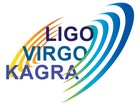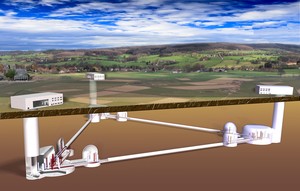

 ARAUCARIA
ARAUCARIAThe Araucaria Project, started in 2000, is a collaboration between astronomers from institutions in Chile, the US and Europe. Its principal aim is to provide an improved calibration of the local extragalactic distance scale.
In the process of setting up the extragalactic distance scale, the greatest difficulty leading to the currently largest contribution on the systematic uncertainty of the Hubble constant lies in the determination of accurate absolute distances to nearby galaxies.
The principal reason for this persisting difficulty is in the ill-known dependences of stellar standard candles, used to measure the distances of nearby galaxies, on the environmental properties of their host galaxies (metallicity, age of the stellar populations).
The Araucaria Project is an effort to remedy this situation for several of the most important stellar candles, including Cepheid variables, RR Lyrae stars, red clump giants, and blue supergiants which all have the potential to provide accurate distance determinations to nearby galaxies once their environmental dependences are well calibrated.
Group of astronomers from the Copernicus Astronomical Center, participating in the project i lead by Grzegorz Pietrzyński. Other members of the group are: Bogumił Pilecki. Radosław Smolec, Mónica Taormina, Piotr Wielogórski, Bartłomiej Zgirski.
To read more about the ARAUCARIA project visit the official website: ARAUCARIA.

The project has to main goals: (1) to detect circumbinary planets around a sample of up to 350 eclipsing binary stars using eclipse timing and precision radial velocities.(2) to characterize the binary stars with an unprecedented precision to test the stellar structure and evolution models.
In order to achieve these goals a global network of four 0.5-meter robotic telescopes (Australia, Africa, South America) has been constructed, to collect high precision, high cadence light curves of the binaries.
The first telescope was constructed thanks to the "FOCUS" grant (170 kEuro) from the Foundation for Polish Science, the additional three telescopes and the overall costs of the project for the 5 years has been covered from the highly competitive and prestigious "Ideas" Starting Grant of the European Research Council (1.5 mln Euro).
Read more on official Solaris pages.
 LIGO-Virgo-KAGRA
LIGO-Virgo-KAGRAVirgo is an European project devoted to direct detection of gravitational waves. Together with the US-based LIGO project and with Japanese KAGRA project they form the LIGO-Virgo-KAGRA collaboration to search for gravitational waves predicted by the general theory of relativity by Albert Einstein. In addition to the data analysis and the development of the statistical signal detection theory, Polish part of the Virgo team is modeling the astrophysical sources of gravitational waves, make predictions about the population of these sources, search for the electromagnetic waves emission accompanying the gravitational waves and take part in the construction of the Virgo interferometer.
Gravitational waves astrophysics is a new and promising field of research of the Universe. In contrast to the observations of the electromagnetic waves (radio waves, visible light, X-rays and gamma), which are the main source of our current knowledge, we ''listen'' to the Universe by registering minor disturbances of the space-time curvature using the LIGO, Virgo and KAGRA laser interferometric detectors. Gravitational waves are emitted during the largest cosmic cataclysms: mergers of binary systems of neutron stars or black holes, explosions of supernovae, and by other sources, e.g., unstable or deformed rotating neutron stars. The direct detection of gravitational waves allows the study of objects that are dark (do not shine in electromagnetic waves), testing the theory of gravity in the dynamic regime of strong gravitational field, and the direct study of the interior of neutron stars which contain the densest and most extreme matter existing currently in the Universe. These informations cannot be currently obtained using other methods.
Astrophysicists form the Copernicus Center are members of Virgo-Polgraw group - a part of the LIGO-Virgo-KAGRA collaboration.
 Cherenkov Telescope Array
Cherenkov Telescope ArrayThe Cherenkov Telescope Array (CTA) project is an initiative to build the next generation ground-based very high energy gamma-ray instrument. It will serve as an open observatory to a wide astrophysics community and will provide a deep insight into the non-thermal high-energy universe.
The present generation of imaging atmospheric Cherenkov telescopes (H.E.S.S., MAGIC and VERITAS)
has in recent years opened the realm of ground-based gamma ray astronomy in the energy range above a few tens of GeV. The Cherenkov Telescope Array (CTA) will explore our Universe in depth in Very High Energy (VHE, E > 10 GeV) gamma-rays and investigate cosmic non-thermal processes, in close cooperation with observatories operating at other wavelength ranges of the electromagnetic spectrum, and those using other messengers such as cosmic rays and neutrinos.
Nicolaus Copernicus Astronomical Center is a member of the CTA Consortium consisting of over 500 scientists working in 25 countries: Argentina, Armenia, Austria, Brazil, Bulgaria, Croatia, Czech Republic, Finland, France, Finland, Germany, Greece, India, Ireland, Italy, Japan, Namibia, Netherlands, Poland, Slovenia, South Africa, Spain, Sweden, Switzerland, the UK, and the USA.
Read more on CTA official pages.

SALT ( Southern African Large Telescope) is an international project to build and use an optical telescope of 11m diameter observing the southern sky. A similar telescope is already operating in Texas. Polish astronomers are participating in the project, with Poland having a 10% share in the construction and running costs. In return we will have access to one of the largest and most modern instruments in the world. CAMK is the Polish coordinator for the project. More on the SALT pages.
 BRITE-PL (BRight Target Explorer)
BRITE-PL (BRight Target Explorer)
The BRITE project is aimed at studying bright stars (brighter than the Sun) in order to determine their structure and physical processes (most importantly convection) in the range of parameters which is otherwise difficult to study (there is a lot of telescopes to study faint stars but they cannot study bright stars!). The project is realized by a consortium of Canadian, Austrian and Polish institutes. The idea is to use constellation of six small (nano-) satellites, able to perform precise mesurements of changing brightness of oscillating stars. Light variations from such stars are analyzed by the methods of stellar seismology by, among others, the stellar seismology group at the Copernicus Center. Total number of suitable observation targets (stars) is about 500-800.
Each consortium country build and send to orbit two satellites. The Polish Consortium BRITE-PL was established in October 2009 by two institutes of thre Polish Academy of Sciences: Space Research Centre and Nicolaus Copernicus Astronomical Centre. The consortium is financed by the Ministry of Science and Higher Education and National Science Center with a total budget above 14 million PLN. Both Polish satellites have been already built. The first satellite (Lem) was launched into orbit on November 21, 2013. The second one Heweliusz, has been launched on August 19, 2014.
Read more on BRITE-PL.

H.E.S.S. (High Energy Stereoscopic System) is a system of five telescopes recording Cherenkov radiation from atmospheric showers generated by high-energy particles and photons in the Earth's atmosphere, used to observe gamma rays with energies above 100 GeV. The observatory is located in Namibia, near Mount Gamsberg. Pulsars, plerions, active galactic nuclei, binary stars systems, and supernova remnants are observed at the H.E.S.S. observatory. It also studies the properties of cosmic rays, radiative processes in astrophysics, and tests the most fundamental physical theories. Use of H.E.S.S. has led to many spectacular discoveries that have been published in the most prestigious scientific journals. Nicolaus Copernicus Astronomical Center plays the role of the national coordinator of the participation of Polish scientists in the H.E.S.S. project. Scientists from the Nicolaus Copernicus Astronomical Center, Institute of Nuclear Physics PAS, the Jagiellonian University, the University of Warsaw and the Nicolaus Copernicus University in Toruń are members of an international consortium for telescope operations.
More on the pages of H.E.S.S.:
http://www.mpi-hd.mpg.de/hfm/HESS/HESS.html,
https://twitter.com/hesstelescopes,
https://www.facebook.com/HESSTelescopes,
https://www.youtube.com/channel/UCfgdnrEfqPlolXlSnoMPBfA,
https://www.instagram.com/hesstelescopes/.

The Gaia-ESO Survey is an ambitious spectroscopic survey that is observing more than 100000 Galactic stars. Spectra of medium- and high-resolution are being collected with the FLAMES multi-fiber spectrograph of the European Southern Observatory (ESO), at the 8 meters Very Large Telescope (VLT), in Cerro Paranal, Chile.
The Survey is observing stars in all components of the Milky Way (the thin and thick disks, the bulge, and the halo), and in 80 open clusters of different ages and metallicities. The targets include stars of several spectral types (from O- to M-type) and in distinct stages of their evolution (giants, dwarfs, and pre-main-sequence stars).
The goal is to provide a large overview of the kinematics and chemical composition of stars in the Galaxy. This is an important information to understand the history of formation and evolution of the Milky Way. In addition, studying the open cluster stars will contribute to improve our understanding of stellar evolution from the pre-main sequence to the red giant stage.
 ATHENA
ATHENAATHENA is the new generation X-ray telescopes which has been accepted by European Space Agency as a large mission with a launch foreseen in 2028.
For many years, Polish engineers are building different satellite components. We have been invited by researchers from Max Planck Institute to participate in the design and construction of WFI/ATHENA detector. Also French Space Agency has been invited us to make elements of X-IFU/ATHENA instrument.
Polish participation in the preparation of the satellite is extremely important. ATHENA science covers all important topics of modern high energy astrophysics. The implementation of ATHENA for launch in 2028 will guarantee a transformation in our understanding of the Hot and Energetic Universe, and establish European leadership in high-energy astrophysics for the foreseeable future.
To read more about the ATHENA telescope please see the Polish ATHENA website and the ATHENA official website: http://www.the-athena-x-ray-observatory.eu.
 Einstein Telescope (ET)
Einstein Telescope (ET)Einstein Telescope (ET) is a proposed (under)ground-based gravitational wave detector. The main idea is to test Einstein's theory of gravity in strong field conditions and to realize a precision gravitational wave astronomy, mainly of massive compact stellar bodies or of highly asymmetric (in mass) binary stellar systems, which require the sensitivity order of magnitude greater than the current gravitational wave detectors Advanced Virgo and Advanced LIGO. Einstein Telescope will achieve a greatly improved sensitivity by its location several hundred meters underground, increasing the size of the interferometer arm to 10 km length (compared to 4 km for LIGO, and 3 km for Virgo and KAGRA), and by implementing a series of new technologies. These include a cryogenic system to cool some of the main optics to 10-20K, new quantum technologies to reduce the fluctuations of the light, and a set of infrastructural and active noise-mitigation measures to reduce environmental perturbations.
Einstein Telescope will make it possible, for the first time, to explore the Universe through gravitational waves along its cosmic history up to the cosmological dark ages, shedding light on open questions of fundamental physics and cosmology. It will test the physics near black-hole horizons (from tests of general relativity to quantum gravity), help understanding the nature of dark matter (such as primordial BHs, axion clouds, dark matter accreting on compact objects), and the nature of dark energy and possible modifications of general relativity at cosmological scales. This detector will allow to study effectively the whole population of stellar-mass binary black holes, and the majority of binary neutron star systems; the predicted number of detections per year are hundreds thousands of events.
ET is a design study project in the European Framework Programme (FP7). It has been proposed by 8 European leading gravitational wave experimental research institutes, coordinated by the European Gravitational Observatory.
Researchers from the Nicolaus Copernicus Astronomical Center involved in the project are Michał Bejger, Tomasz Bulik, Paweł Ciecieląg, Piotr Gawron, and Brynmnor Haskell. Michał Bejger is one of coordinators of the Observing Science Board divisions, dedicated to exploring scientific potentials of different detector configurations, and creating a set of common tools for data analysis.
More about the project can be found on its website.